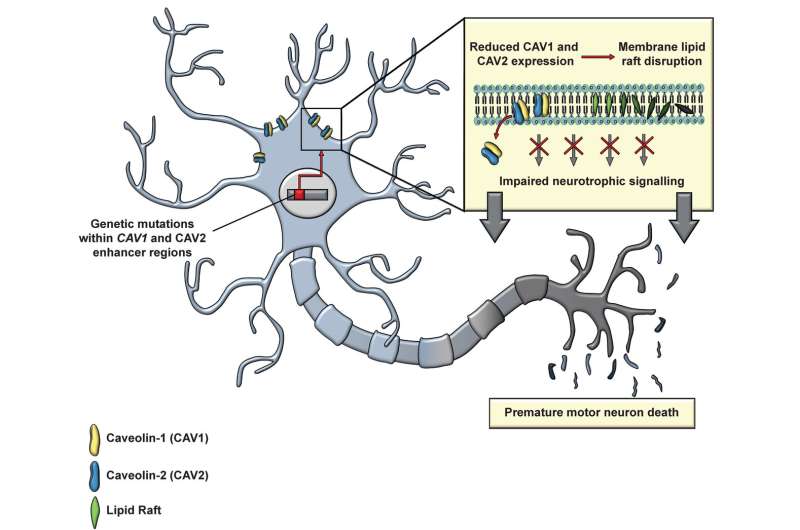Scientists identify new genetic MND risk factor in junk DNA

A new genetic risk factor for Motor Neurone Disease (MND), which if treated could halt or prevent the degenerative condition, has been identified in so-called 'junk DNA' by scientists at the University of Sheffield. The newly discovered genetic changes are present in up to one percent of MND patients.
The pioneering research, published in the journal Cell Reports, focused on genetic mutations in non-coding DNA, often known as junk DNA because it does not directly encode protein sequences. Non-coding DNA makes up more than 99 percent of the human genome, but currently is relatively unexplored.
This research includes new methods for studying mutations in non-coding DNA which could be applied to other diseases.
Experts from the Neuroscience Institute at the University of Sheffield also found that an existing neuroprotective drug developed at the University of California San Diego (UCSD) called SynCav1 could help MND patients carrying the newly discovered genetic mutation.
MND, or Amyotrophic Lateral Sclerosis (ALS) as it is also known, is a disorder that affects the nerves—motor neurons—in the brain and spinal cord that form the connection between the nervous system and muscles to enable movement of the body. The messages from these nerves gradually stop reaching the muscles, leading them to weaken, stiffen and eventually waste.
The progressive disease affects a patient's ability to walk, talk, use their arms and hands, eat and breathe. Approximately 5,000 people in the UK and 30,000 people in the US are currently living with MND, with numbers expected to rise.
Dr. Jonathan Cooper-Knock, Lead Author of the Study and NIHR Clinical Lecturer in Neurology at the Neuroscience Institute at the University of Sheffield, said: "Until now scientists have never systematically examined non-coding or junk DNA in relation to the development of MND.
"Not only have we identified a mutation in junk DNA which puts people at risk of developing a certain form of the MND, but we have also found that by targeting the mutated gene with the established neuroprotective drug called SynCav1, it might be possible to halt or potentially prevent the disease progressing in those patients.
"This is a significant breakthrough in terms of genetic risk factors driving personalised medicine for MND patients."
More information: Cell Reports (2020). DOI: 10.1016/j.celrep.2020.108456



















